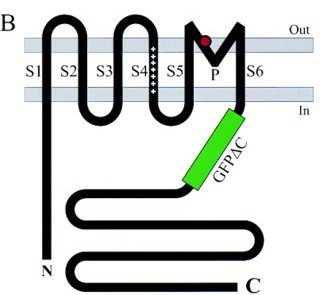
Green fluorescent protein-based sensors for detecting signal transduction and monitoring ion channel function
Abstract
Measuring signal transduction is a fundamental problem in studying information processing in the nervous system. To address this problem, families of detectors that are chimeras between signal transduction proteins and fluorescent proteins have been designed. The prototype sensor is a novel, genetically encoded probe that can be used to measure transmembrane voltage in single cells. The chapter describes a modified green fluorescent protein (GFP) fused to a voltage-sensitive K+ channel so that voltage-dependent rearrangements in the K+ channel induce changes in the fluorescence of GFP. The probe has a maximal fractional fluorescence change that is comparable to some of the best organic voltage-sensitive dyes. The fluorescent signal is expanded in time in a way that makes the signal 30-fold easier to detect than that of a traditional linear dye. Sensors encoded into DNA have the advantage that they may be introduced into an organism noninvasively and targeted to specific brain regions, cell types, and subcellular compartments.